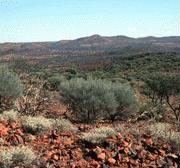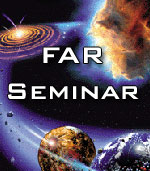How to Make a Leaf? 400 Million Years of Repeated Answers to the Same Evolutionary Question
When: July 14, 2003 12AM PDT

The chance to compare multiple repetitions of evolutionary history is
at the heart of astrobiology, but opportunities for such evolutionary
comparisons are already available here on earth. Plants are particularly
attractive for such study: nearly all aspects of land plant form—including
roots, leaves, wood, and reproductive structures—have evolved a number of
times independently and details of plant construction allow the preservation
in fossils of an unusual wealth of biochemical, physiological, and
developmental information.
Leaves have evolved independently in a number of different plant groups
and several basic leaf morphologies have appeared again and again among
fossil and extant lineages. Comparative investigation of living plants has
demonstrated that this morphological convergence has required the convergent
evolution of developmental processes as well. Furthermore, these recurring
morphological and developmental alternatives also appear to represent
physiological alternatives. Opposing strategies are employed in the
different leaf types to ensure an even supply of water to the entire
photosynthetic surface and exploitation of these physiological alternatives
has involved the correlated evolution of changes in anatomy, hydraulic
resistance properties, transport regulation capabilities, and vascular cell
wall chemistry. Therefore, the basic types that can be recognized in fossil
and extant plants represent highly integrated developmental, biochemical,
and physiological syndromes that have evolved repeatedly after divergence
from an extremely simple, leafless common ancestor.
However, nature is also capable of sports that are completely alien to
our expectations. For example, the Devonian-age organism Prototaxites
produced enormous tree-like trunks composed of intertwined, 50 micron-
diameter tubes. This bizarre organism has defied classification for the 150
years since its discovery, but geochemical studies now suggest its
biological affinities are with the fungi. Both of these evolutionary
extremes, convergence and novelty, will be discussed.
 A Record of the Earliest (4.5-3.8 Ga) Surface Conditions on Earth?
A Record of the Earliest (4.5-3.8 Ga) Surface Conditions on Earth? Simulating Groundwater Radiolysis With Oxidation of Pyrite by Hydrogen Peroxide Solution
Simulating Groundwater Radiolysis With Oxidation of Pyrite by Hydrogen Peroxide Solution Exploring Planet-Forming and Debris Disks
Exploring Planet-Forming and Debris Disks Quantifying Water Production in Comets - The "Meter Stick" for Their Chemical Taxonomy
Quantifying Water Production in Comets - The "Meter Stick" for Their Chemical Taxonomy